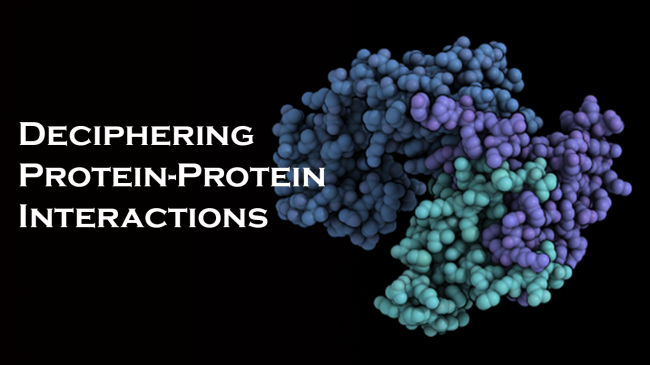Is Deciphering Protein-Protein Interactions (PPIs) the Next Big Research Challenge?
Proteomics, the study of protein interactions is a relatively new field developed gradually throughout the 20th century. Until the late 1990’s, functional analyses of proteins mainly focused on single proteins, however, in a complex body system, proteins rarely act alone. Whether natural or artificial, proteins often act through dynamic interactive networks, and thus should be studied based on their interactions to identify their function properly.
Protein–protein interactions (PPIs) are essential biological processes and their specificities are highly customized to their functions. PPIs can: modify enzymes’ kinetic properties; facilitate mechanisms for substrate channeling; form a binding site for small effector molecules; suppress or inactivate proteins; change the specificity of a protein; and play a role in regulating upstream or downstream level. Studies predict up to 400,000 protein-protein interactions within the human body, albeit, identification is difficult, which poses an important problem in system biology.
Currently, there are numerous computational methods used to predict PPIs and similar interactive networks, however, these methods are expensive, time-consuming, and not without limitations. For starter, many methods rely on a large volume of scientific literature for identification. Typically, these methods use a combination of information, such as natural language processing (NLP), coevolution information, and proteins sequence data. These methods analyze the coevolution trends of protein–protein interactions by automatically extracting homologous proteins data from sequence alignment found in literature, such as PubMed, using semantic models. However, using this extraction method poses a problem since up to date information can be missing from literature, thus rendering identification and predictions insufficient.
Fortunately, recent years saw great advancements in PPIs identification thanks to high-throughput experimental methods, including yeast two-hybrid, and affinity purification coupled with mass spectrometry. Protein complementation assays and protein chip technology led to the establishment of protein-protein interaction (PPI) networks in different model species and several human cell lines. Deciphering the molecular logic associated with PPI networks remains a major challenge for the next decade, not only for fundamental research but also for pharmaceutical R&D. Due to enormous multiplicity of protein-protein interactions there is a need in a diverse but structurally competent library of compounds, such as ChemDiv’s PPIs modulator library, which is readily available for study of putative protein targets for therapeutic and disease purposes.
ChemDiv PPIs library design is based on known PPI modulators, novel literature, and screening data. PPI modulators take a special place in modern medicinal chemistry and require discovery and development of new reactions, generation of new scaffolds, and diligent adaptation for diversity oriented synthesis (DOS). The Diversity Oriented Synthesis is needed to solve the more complex scaffold/molecules structures similar to natural products. The new scaffolds are designed with high Fsp3 score to yield natural-like synthetic products, and the departure from “Flatland” helps address the challenge of selectivity and/or specificity towards the binding hot-spot protein interfaces and preserve drug-like properties for modulators of PPIs.
Using new scaffold libraries leads to: better diversity for compounds; highly complex molecules, natural product-likeness; access to greater chemical space; better complement to the spatial subtleties of target proteins; 3D-dimensionality resulting in higher selectivity; higher water solubility; and better physicochemical parameters (logP and PSA). The faster the transition of compound from discovery to drugs, the more efficiency is demonstrated and therefore – the more time and money is saved.
Further reading
Other new novel identification methods currently being proposed include a sequence-based approach using multivariate mutual information (MMI) of protein feature representation, for predicting PPIs via Random Forest (RF); and Matrix-Based Sequence Representation Model with Amino Acid.
Learn more about ChemDiv’s Libraries
MDM2-p53 PPI inhibitors targeted Library – 17,000 compounds
MDM2 PPI Library – 7,000 compounds
References
- Braun, P. and Gingras, A. C. (2012), History of protein–protein interactions: From egg-white to complex networks. Proteomics, 12: 1478–1498. doi: 10.1002/pmic.201100563
- Chen J, Sawyer N, Regan L. Protein–protein interactions: General trends in the relationship between binding affinity and interfacial buried surface area. Protein Science: A Publication of the Protein Society. 2013;22(4):510-515. doi:10.1002/pro.2230.
- Ding Y, Tang J, Guo F. Identification of Protein–Protein Interactions via a Novel Matrix-Based Sequence Representation Model with Amino Acid Contact Information. Christov CZ, ed. International Journal of Molecular Sciences. 2016;17(10):1623. doi:10.3390/ijms17101623.
- Ding Y, Tang J, Guo F. Predicting protein-protein interactions via multivariate mutual information of protein sequences. BMC Bioinformatics. 2016;17:398. doi:10.1186/s12859-016-1253-9.
- Rao VS, Srinivas K, Sujini GN, Kumar GNS. Protein-Protein Interaction Detection: Methods and Analysis. International Journal of Proteomics. 2014;2014:147648. doi:10.1155/2014/147648.
- Tkachenko, E. S. (2012), Library of Modulator of Protein-protein Interactions (PPI). ChemDiv.
